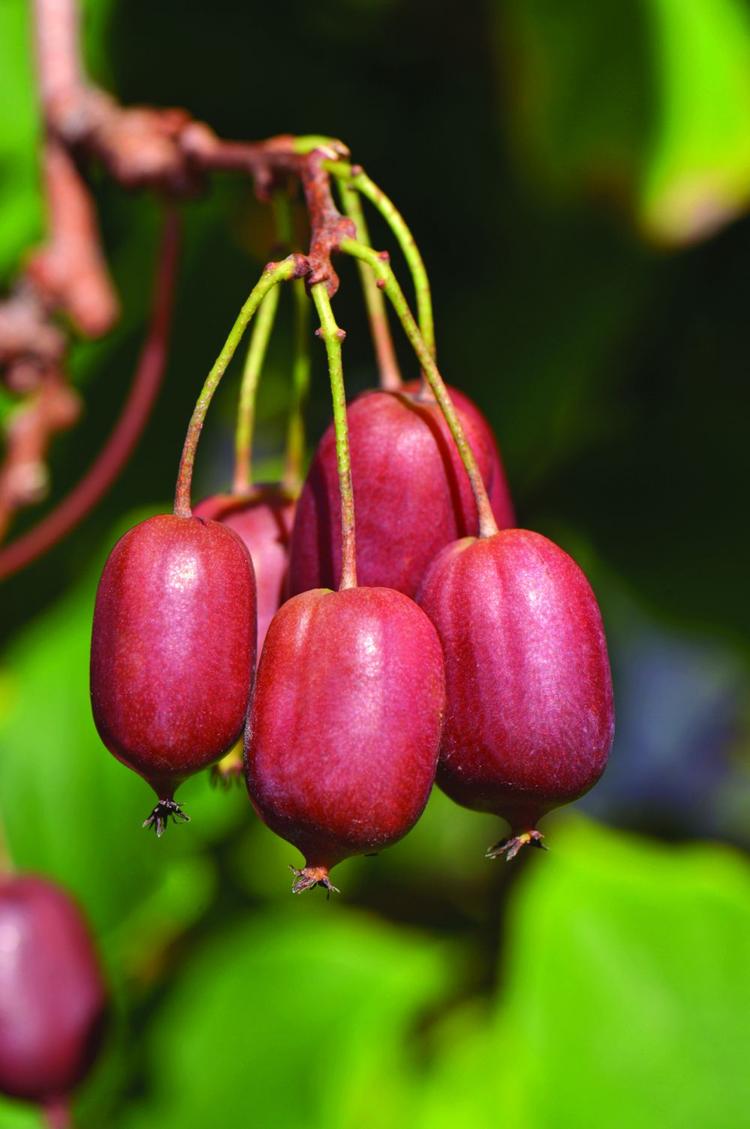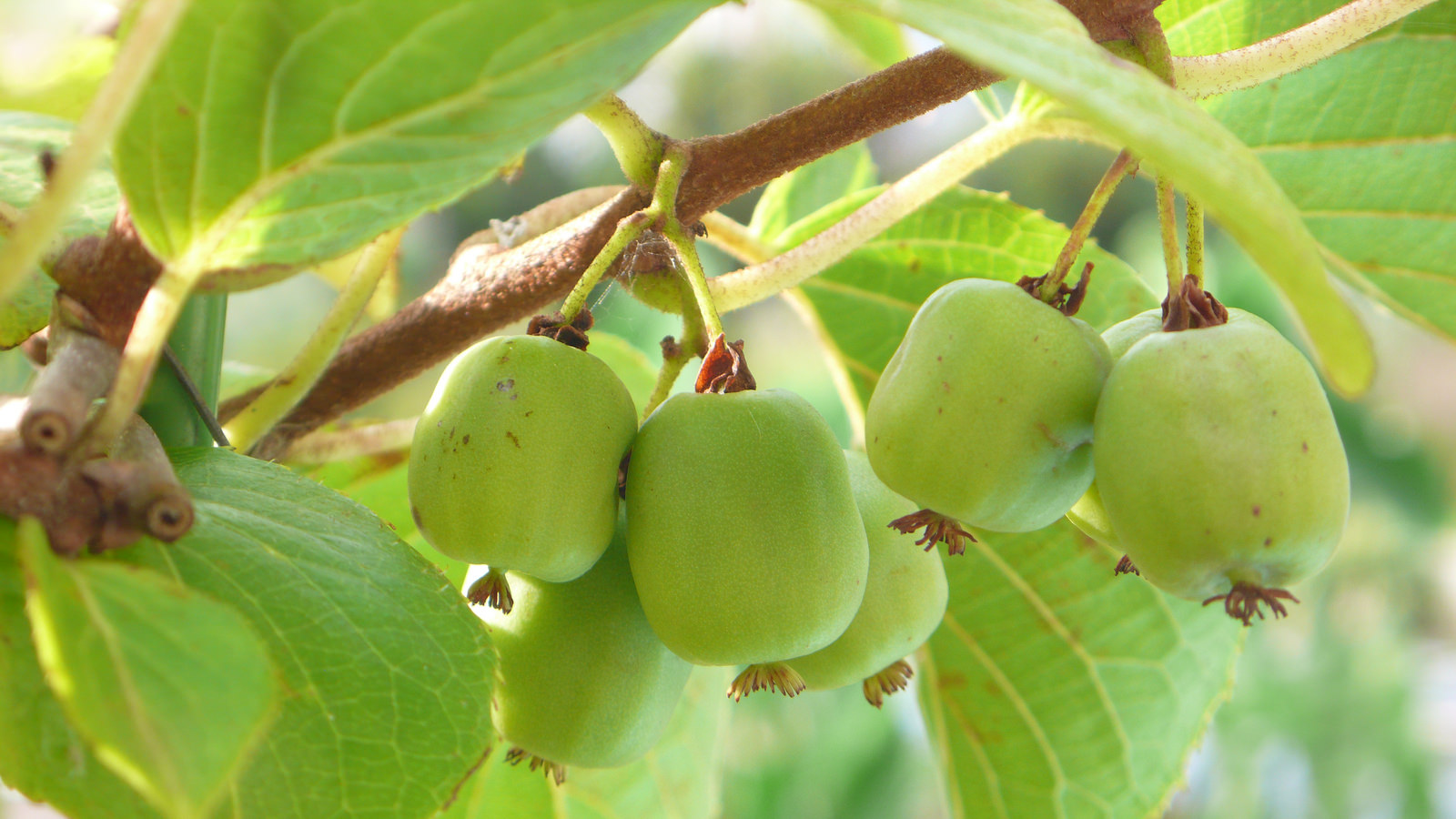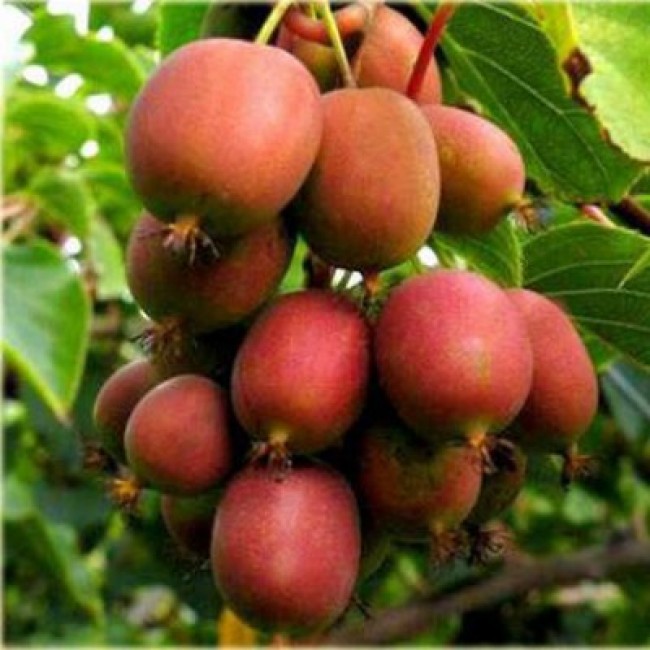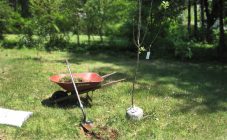Content:
Actinidia is not only an ornamental plant in the form of a liana, but also a full-fledged garden crop that yields a harvest of useful fruits. Even such a well-known breeder as I.V. has joined the business of modernizing the agronomic properties of lemongrass and actinidia. Michurin, who developed a number of improved varietal denominations. Few gardeners decide to start growing actinidia on their personal plots in the Moscow region, as well as in the entire middle zone of our country.
Types of actinidia
Such a well-known fruit as kiwi, sold in any vegetable outlet, is the fruit of Chinese actinidia - an extremely heat-loving culture that cannot germinate in our frosts. However, long-term gardeners are still trying to find a way to create conditions for its germination in our latitudes. The difficulty of the rather time-consuming care of Chinese actinidia is to create a shelter. The other three varieties below are more cold tolerant.
Kolomikta
It grows in its natural environment in the Far Eastern region. It has good resistance to frost, typical for the territory of the middle zone, which makes it possible to plant and care for actinidia in the Urals.
The temperature minimum at which the development of actinidium in the Urals of Kolomikt is capable of continuing, is -44оС. However, spring temperature drops have a negative impact on the plant.
The maximum shrub height is 5 meters. The average trunk diameter of a fully formed plant is 5 centimeters. The color of the shoot is red-brown. Actinidia Kolomikta is distinguished by the appearance before the transition to the flowering stage of variegation of a whitish-crimson color. The flowers, which have an unusual lemon-lily of the valley aroma, are small in size. The flowering period begins at the end of spring. When ripe, the berries fall to the ground.
Arguta
The height of the fruitful shrub of Argut actinidia can reach more than 10 meters. The index of frost resistance of this species is relative. Rare varietal varieties are capable of continuing their vital activity in conditions of a drop in temperature below -30 ° C. The average limit of cold hardiness of Argut actinidia is -27оС. On the territory of the Moscow Region and central Russia, the temperature does not drop to this level every season, but once every 10 years such conditions occur in our country.
The size of the leaves of Arguta actinidia is larger than average. The diameter of the flowers without scent is 3 centimeters. The average quantitative indicator of productivity is 14 kilograms. Ripe fruits do not crumble.
Polygam
The height of the Polygama actinidia vine is 5 meters. This species arose in the Far East. The color of the shoots is light brown. Actinidia Poligama has a relative cold resistance - the minimum temperature at which the plant is able to continue fruiting is -31oC. However, shoots that have not completed the growing season are prone to freezing.
The fruit of the polygamy actinidia is yellow. The size of large leaves is 14 centimeters. The variegation, characteristic of the acquisition of silvery foliage, remains until the berries are fully ripe.
The list of the State Register of our country in the field of breeding achievements contains more than 4 dozen varietal names of actinidia, planting and care in the Moscow region can be carried out, as well as those oriented towards cultivation in certain regions of Russia.
Often, the choice of actinidia is the best varieties for the Moscow region, the cultivation of which is limited exclusively to the samples of planting material presented in nurseries. Since many seedlings are purchased abroad, most of them do not take root in our climatic conditions.
Varieties for cultivation
List of varieties of actinidia Kolomikta:
- Grape is a cold-resistant medium-yielding varietal actinidia. The transition to the ripening stage occurs at the beginning of August. The weight of one olive-green berry is 2 grams. Gastronomic characteristics - sweet and sour taste and apple aroma;
- Graceful is a winter-hardy variety of actinidia. This variety of actinidia is grown in the Urals, planting and caring for which is carried out based on varietal characteristics. 4-gram fruits ripen in the second half of August. Gastronomic characteristics - sweet and sour taste and aroma of pineapple. Good disease resistance;
- Gummy is a medium-hardy late ripening actinidia variety. The color of 3 gram berries is olive green, sometimes with a reddish tint. Gastronomic characteristics - very sweet taste and strawberry aroma. High in vitamin C.
List of varieties of actinidia Argut:
- September is a medium late variety of actinidia. The weight of dark green berries is 10 grams. The gastronomic characteristics of this varieties - slightly sour taste and aroma of pineapple. Low content of vitamin C;
- Mikhnevskaya is a medium late variety of actinidia. The gastronomic characteristics of a 10 gram berry are sweet and sour taste and pineapple aroma.
List of varieties of Actinidia Polygam:
- Zlata is a medium-late yielding varietal actinidia. Orange fruits weigh 5.5 grams on average. The taste is reminiscent of a mixture of figs and bell peppers;
- Lesnaya is a variety that has an identical description with the Zlata variety, but the average weight of its berries is 7 grams;
- Spicy is a late-ripening actinidia variety. The color of 3 gram berries is dark orange. The fruit tastes like hot pepper.
Landing site preparation
Actinidia, on average, is able to bear fruit in one place for half a century. Plants of both sexes must be planted on the site, which is due to the fact that actinidia is a dioecious plant that requires cross-pollination. Usually, 1 male is planted on 5 female plants. The type of trellis for the actinidia vine is a grape rack.
Within the middle zone, actinidia is planted in a place protected from the wind, on the southern side of a residential building. Adequate soil moisture must be maintained. In hot weather, the plant is sprayed twice a day.
Features of the soil for planting actinidia in the Moscow region:
- the groundwater level should not exceed 1 meter;
- neutral pH;
- loamy, with a high humus content;
- well-drained soil;
- high potassium content.
The right time to disembark
The best option would be to transplant a mature seedling from a container. The age of the planting material should not exceed 3 years.
When planting, a distance of approximately 3 meters should be observed.
The germination of the root system of the actinidia creeper is carried out in the horizontal direction. The shallow planting pit should be well drained to avoid fluid stagnation. The following materials can be used to make drainage:
- brick debris;
- pebbles;
- coal slag.
Step-by-step instructions for planting work:
- 2 weeks before disembarkation, create a 50 cm depression with a diameter of 44 cm;
- Set aside the topsoil;
- Lay drainage with a 10 cm layer;
- Mix the top layer with a bucket of humus;
- Fill the pit with a bucket of water;
- Wait for the soil to settle;
- Water the seedling in a container;
- Remove the seedling, avoiding deformation of the root system;
- Fill a small hill from clean soil;
- Install a seedling;
- Cover with planting mixture;
- Water the plant;
- Mulch the ground;
- Protect the plant from pets;
- Create shadow conditions for 2 weeks.
How to care in the suburbs
Drying of the soil and dry air is unacceptable for actinidia - this leads to the beginning of the release of foliage and the freezing of immature shoots with the onset of frost.
Watering is carried out weekly in the amount of 5 liters of water per formed bush. Planting legumes under it will have a good effect on actinidia.
Terms of fertilization of actinidia:
- with the beginning of spring by 1 m² a 20-gram dose of potassium-phosphorus fertilizers and 35 grams of nitrogen fertilizers are applied;
- when the ovaries are formed, by 1m² a 10-gram dose of potassium-phosphorus fertilizers and 15 grams of nitrogen fertilizers are applied;
- at the end of September, a 20-gram dose of potassium-phosphorus fertilizers is applied.
After applying dry fertilizers to a 7-centimeter depth, the plant is watered.
How to propagate actinidia
Available breeding methods for actinidia:
- Reproduction by layering consists in pinning the shoot on the ground, after which it is sprinkled with a 10-centimeter layer of soil. The upper part of the shoot is outside. The shoot area is mulched. Rooting is carried out at the end of summer;
- For cuttings, young 10-centimeter shoots are taken in early June. The upper straight cut is placed 3 cm from the kidney. The measure of the lower cut is slightly more than 40 °. The lower part of the foliage is removed. Planting of cuttings is carried out at a 60 ° angle with a deepening to the middle bud. The shelter is made of non-woven fabric. Spray 10 times a day. For the winter, cover with fallen leaves.
Actinidium vine shaping
You can start shaping the shrub in the third year after planting, exclusively in the summer. It is formed in the form of a two-arm cordon. When pruning Kolomikta and Polygamy, fruiting on long shoots is taken into account. Pruning of young shoots is carried out in the third part. Anti-aging pruning is carried out after 10 years of germination.
Actinidia care in autumn
After the seasonal harvest of fruits, planting is fertilized with phosphorus and potassium. After the foliage has fallen off, water-charging irrigation is carried out.
Adult cold-resistant plants do not cover - instead, they mulch the peri-stem area. Young plants are removed from the trellis and covered with spruce branches, dry foliage, or a 20-centimeter peat layer, under which a rodent repellent is placed. Before covering the vine, it is sprayed with a 3% Bordeaux liquid.
Harmful effects
Diseases of actinidia in the middle lane:
- Powdery mildew, which is disposed of by double treatment with dissolved 0.5% soda ash 1 time in 10 days;
- Fungal diseases, which are treated with Fitosporin every 10 days;
- Leaf spot, which is treated with 1% Bordeaux liquid;
- The leaf beetle is eliminated with a tincture from the tops of tomatoes and hot peppers.
Actinidia is a wonderful ornamental and fruiting plant for the Moscow region. The fruits of some varieties of actinidia contain a higher concentration of vitamin C than rose hips. Observing simple care requirements, in autumn you can grow and harvest a bountiful harvest of useful berries.



















